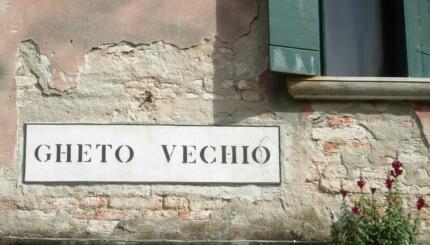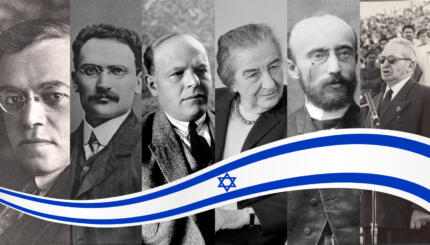The following article focuses on the formative years of Hadassah, from its founding in 1912 through 1933. It is reprinted with permission from the American Jewish Historical Society’s
American Jewish Desk Reference: The Ultimate One Volume Reference to the Jewish Experience in America
, published by Random House.
“The Time Was Ripe”
When seven women concluded on February 14, 1912 “…that the time is ripe for a large organization of women Zionists” and issued an invitation to interested friends “to attend a meeting for the purpose of discussing the feasibility of forming an organization” to promote Jewish institutions in Palestine and foster Jewish ideals, they scarcely anticipated their resolve would lead to the creation of American Jews’ largest mass-membership organization.
Hadassah, the Women’s Zionist Organization of America, became the most popular American Jewish organization within a short span of years, maintaining that preeminence to this day. It also is the most successful American women’s volunteer organization, enrolling more women and raising more funds than any other national women’s volunteer organization
The First Meeting
The first meeting drew over thirty female Zionists to the vestry room of New York City’s Temple Emanu-El on February 24, 1912. At the meeting’s conclusion, almost two-thirds of those in attendance were elected officers or directors, suggesting the leadership opportunities Hadassah would offer women. Henrietta Szold, at age fifty-two, was the senior leader, deeply committed to Zionism as a political and moral movement of Jewish renewal.

Help us keep Jewish knowledge accessible to millions of people around the world.
Your donation to My Jewish Learning fuels endless journeys of Jewish discovery. With your help, My Jewish Learning can continue to provide nonstop opportunities for learning, connection and growth.
Hadassah recruited a leadership cadre from women of Eastern European, German, and backgrounds. Many were native born college-educated American Jews, both young and middle aged. Their level of formal learning was unusual for women in this period and signified their cultural aspirations. Hadassah enrolled members from varied socioeconomic backgrounds, but many were working women–teachers, stenographers, shopgirls, and garment workers.
Hadassah focused on women’s health issues, reflecting the social feminism of settlement house work. In January 1913, with 122 members and $542 in dues collected, Hadassah agreed to support a nurse in Palestine for two years. Emma Gottheil’s sister, Eva Leon, who had worked with Jerusalem midwives, raised $5000 from wealthy Chicago non-Zionists for a second nurse. Two weeks later, Rose Kaplan and Rachel (Rae) Lamb sailed for Jerusalem, where they established Hadassah Nurses Settlement, a first step to “bring order to that land of chaos.”
Growth and Conflict
The decision signaled organization growth. After Leon reported that the nurses needed guidance, Hadassah created a Palestine Advisory Committee in New York City to supervise them, setting an important precedent that policy decisions were to be made in America.
By July 1913, Hadassah had chapters in Philadelphia, Baltimore, Boston and New York. In the fall of 1914, the Hadassah School of Zionism opened to provide “intellectual substance” to counteract Christian missionaries and to prepared Hadassah women to speak in public.
On June 19, 1914 Hadassah held the first national convention in Rochester, New York where it officially adopted the name Hadassah and its purpose “…to promote Jewish institutions and enterprises in Palestine and to foster Zionist ideals in America.” Hadassah had already chosen a motto, suggested by Israel Friedlander, from Jer. 8:19-23, Aruchat Bat Ami, translated as “The Healing of the Daughter of My People,” and a seal, designed by Victor Brenner, of myrtle (hadas) branches around a Jewish star. It affiliated with the Federation of American Zionists (FAZ).
Innovative Zionism
Hadassah introduced many innovations to Zionist organization and ideology. Male leaders of FAZ criticized Hadassah for not engaging in Zionist work designed to change Jews into a self-conscious political entity. Hadassah, they claimed, merely did work meant to improve Jewish living conditions.
Hadassah’s decision to establish an urban nurse’s settlement ran counter to Zionists emphasis on cooperative rural settlement and European methods of colonization. Hadassah stressed women-to-women work on humanitarian and religious grounds, as well as American social feminism. Hadassah’s Zionism was distinctly nonideological, a form of practical idealism that Szold considered characteristically Jewish.
During and After WWI
World War I challenged Hadassah, which had thirty-four chapters and 2100 members when the United States entered the war. Turkish repression of Zionist activities in Palestine forced Hadassah to close it Nurses Settlement in 1915. At home, domestic politics strained Hadassah’s unity. Many leaders identified themselves as progressives and advocated socialism, racial equality, and most important, pacifism. Others ardently opposed the Allies.
Despite internal conflicts, all the “factions” of Hadassah worked together to raise thousands of dollars to fund the American Zionist Medical Unit (AZMU), consisting of forty-five physicians, dentists, and nurses, as well as tons of supplies. The Unit arrived in Palestine in 1918 and established hospitals in six cities. The hospitals followed Hadassah’s policy of providing services to all regardless of race, color, or creed. As soon as municipal authorities were prepared to run the hospitals, Hadassah turned them over. Hadassah rejected Zionist policy of creating institutions only for Jews in Palestine.
In 1918, Hadassah joined the restructured Zionist Organization of America (ZOA), despite doubts about its district plan of organization. Hadassah soon discovered it had lost its autonomy. Nevertheless, its membership grew–by 1922 Hadassah enrolled over twelve thousand–while the membership of ZOA declined. In 1920 it started the Hadassah Newsletter and the Central Committee also authorized the creation of Junior Hadassah, for girls eighteen and older, despite competition with Young Judea, the Zionist youth movement.
Gaining Prominence
By 1921, Hadassah began its steady rise to prominence. By mid-1926, Hadassah had achieved virtual autonomy in its program. Growth registered in numbers–by 1928 membership reached a peak of over thirty-seven thousand–while activities demonstrated a commitment for practical work in Palestine infused with Zionist idealism.
Each project’s specificity enabled members to identify with the individual undertakings. These included the Hadassah School of Nursing (1919), an urban recreation program (1928), a school lunch program (1923), as well as health and day care centers and a children’s village.
Patterns established during the formative years were subsequently strengthened. Hadassah maintained its social feminism, progressive political commitments, and understanding of Zionism as a movement to renew Jewish practical idealism. It also remained staunchly protective of its autonomy, its focus on specific projects helping women and children, and its openness to women of all backgrounds. Its leaders continued to include an elite of educated women who drew young women into their ranks. Hadassah fostered close personal ties with the land of Israel and many early leaders spent years living in Palestine, while a significant number of Hadassah’s presidents settled there.


